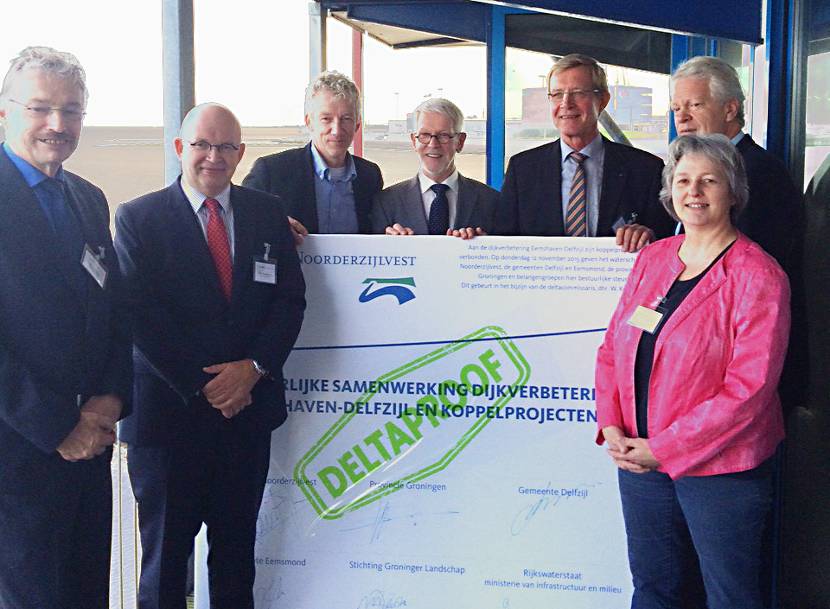Delta Programme Commissioner welcomes innovative dyke improvement
‘The result that has been achieved here shows the approach of a modern-day government, joining forces to tackle a societal issue. When I was here, five years ago, this was not yet the standard. Meanwhile, our collaboration within the Delta Programme is excellent, with civic society parties as well. As it is here. This 12-kilometre stretch of dyke offers a great deal of inspiration, both within the Netherlands and abroad, in the field of innovations and linking various functions, such as the economy, nature and sustainability. Safety and liveability are the points of focus here,’ Delta Programme Commissioner Wim Kuijken commented. Mr Kuijken attended the signing of the collaborative agreement for the dyke improvement project. He symbolically labelled the project "Delta proof".

The Noorderzijlvest district water board is going to accelerate the improvement of the sea wall between the Eemshaven port and Delfzijl. At the moment, the dyke is sufficiently strong, but it does not quite meet the statutory standards. The district water board aims to continue to guarantee its safety in the future. For that reason, a 12-kilometre stretch of the dyke will be raised, widened and made earthquake-proof. Noorderzijlvest is cooperating closely with the province of Groningen, the municipalities of Delfzijl and Eemsmond, and interest groups in order to simultaneously achieve added value in the region for the economy, agriculture, recreation and nature. To this end, the above authorities have signed collaborative agreements. The implementation of linkage projects has thus gained momentum.
Encouraged by the State, government authorities are developing new dyke concepts. Increasingly more district water boards are linking flood protection to other functions and implementing innovative dyke concepts. In Groningen, the provincial authorities and the district water board have joined forces to realise the “Double Dyke” concept, involving the creation of a zone of approx. 0.5 square kilometres that offers possibilities for nature development and innovative agriculture (saline culture). Another concept that is being developed is the “Rich Dyke”. This involves measures taken at the sea side of the dyke to allow natural development. These measures include flood refuges for birds and posts that foster the growth of mussel beds. In addition, a bird breeding island will be created for Arctic terns and other bird species.
The work is scheduled to commence in the autumn of 2016. Work on the crown and the sea side of the dyke will be carried out in the summer season only. In the winter months, there is an increased risk of storms and floods. The safety of the inhabitants remains the matter of highest importance, as it is during the execution of the work.